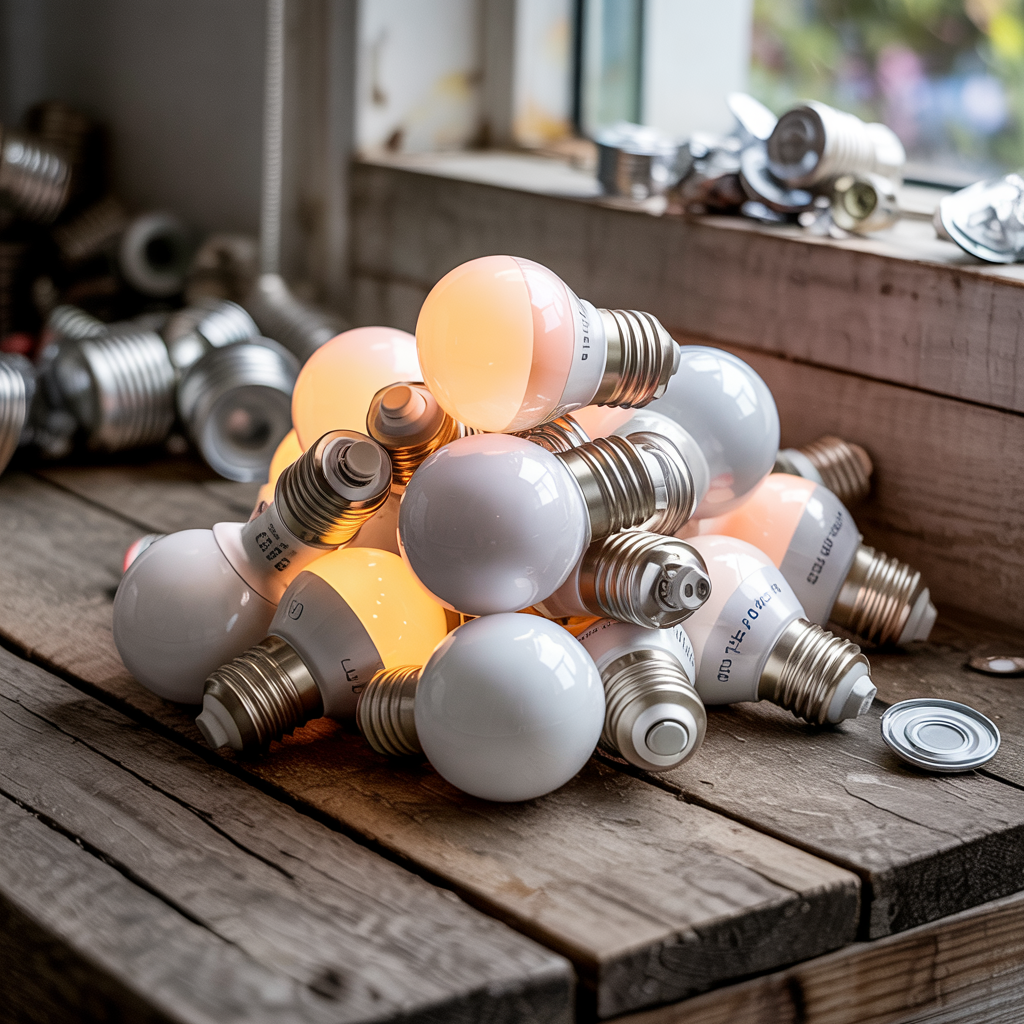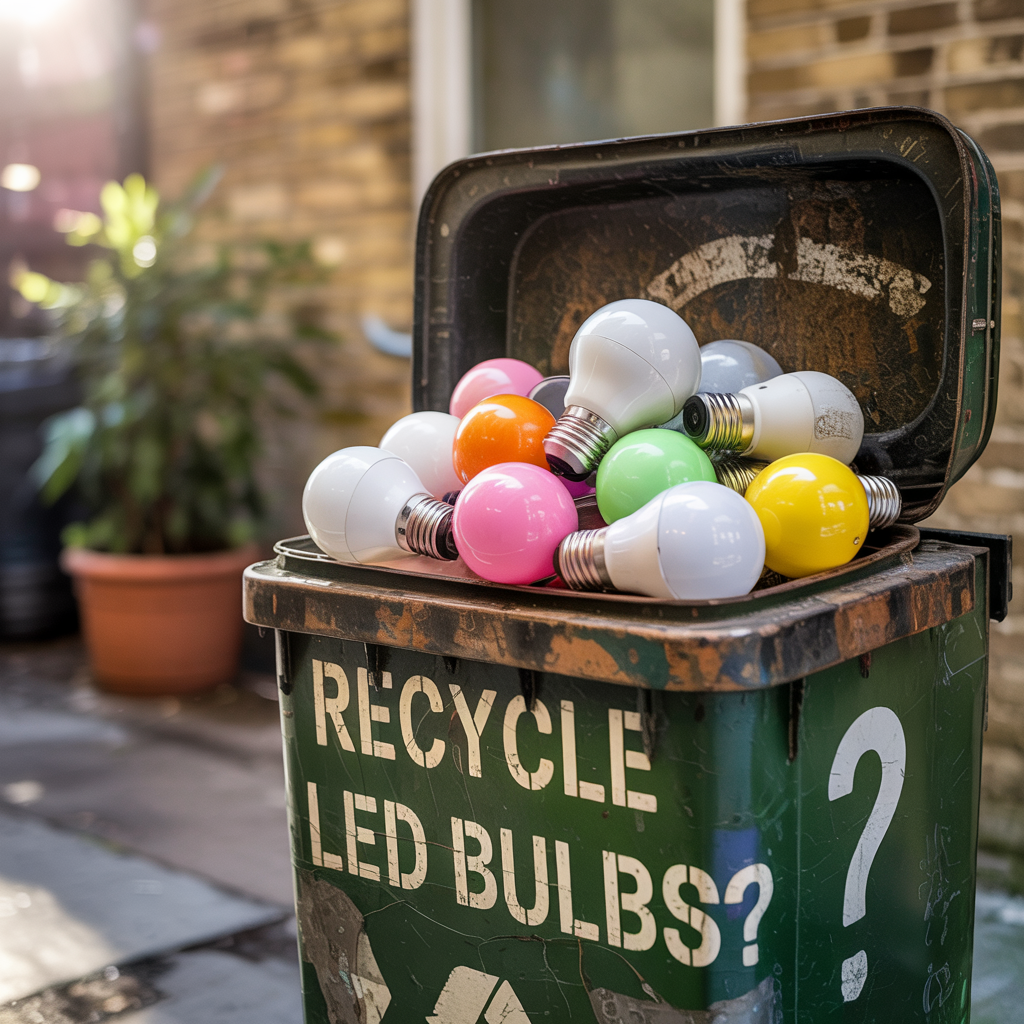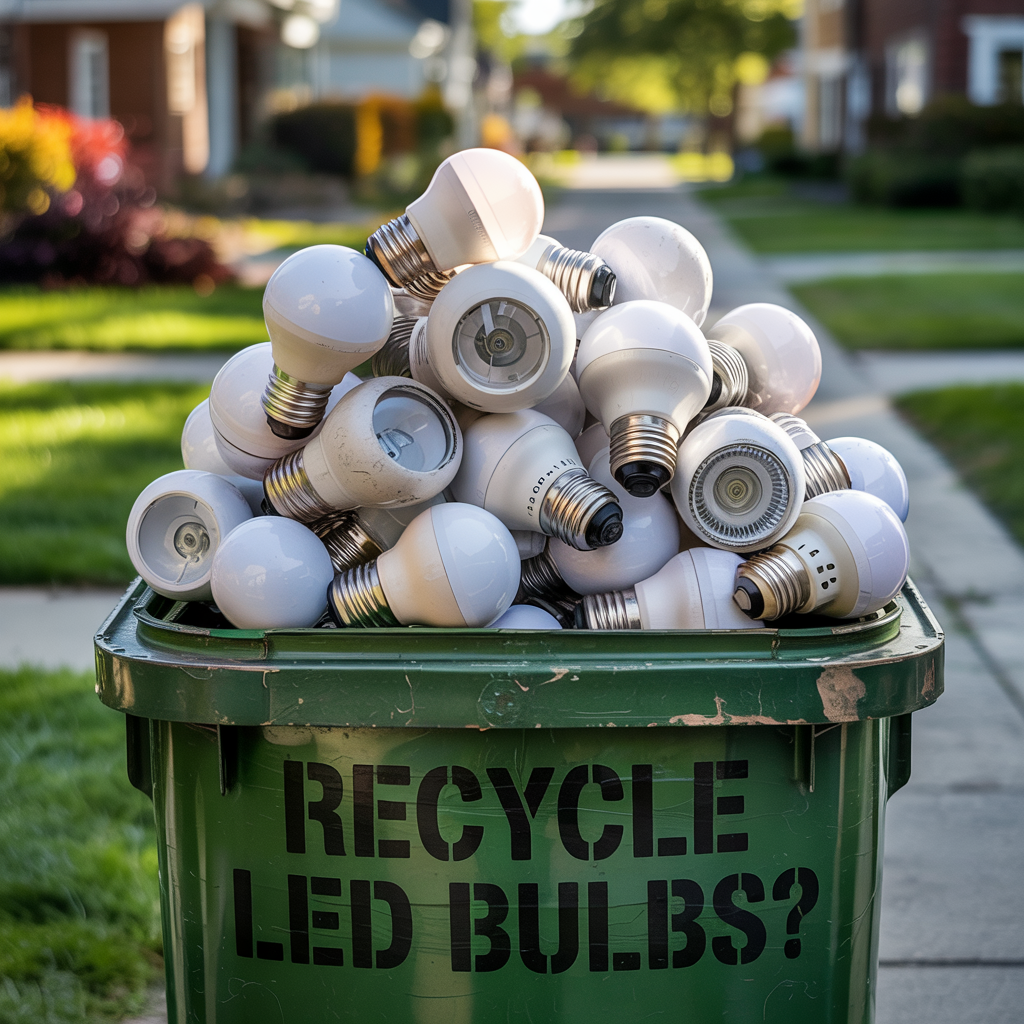How to Recycle LED Light Bulbs? (A Complete Discussion)
Recycling LED light bulbs is crucial for environmental protection and resource conservation. This comprehensive guide will walk you through the entire process, from understanding the composition of LED bulbs to exploring various recycling options and addressing common concerns. We’ll delve into the benefits of responsible disposal, explain the potential hazards of improper handling, and provide…
Recycling LED light bulbs is crucial for environmental protection and resource conservation. This comprehensive guide will walk you through the entire process, from understanding the composition of LED bulbs to exploring various recycling options and addressing common concerns. We’ll delve into the benefits of responsible disposal, explain the potential hazards of improper handling, and provide clear, step-by-step instructions. Learn how to properly dispose of your spent LED light bulbs and contribute to a more sustainable future.
How to recycle LED light bulbs? Take LED light bulbs to a local recycling center, hardware store, or hazardous waste facility that accepts electronics. Do not place them in curbside bins. Check with stores like Home Depot or Lowe’s, which often offer drop-off bins for safe LED bulb recycling.
LED (Light Emitting Diode) bulbs are complex devices, differing significantly from traditional incandescent or fluorescent bulbs. They contain various components, including a semiconductor diode that emits light, a heat sink to manage the heat generated by the LED, a circuit board controlling the electrical current, and a protective casing, often made of plastic or glass. These materials require careful handling and specific recycling methods.
Why Recycle LED Bulbs?

Environmental Impact of Improper Disposal
Improperly discarding LED bulbs poses several environmental risks. The mercury found in some LED bulbs (though less than in CFLs) can contaminate soil and water, posing a threat to wildlife and human health. The various plastics and metals within the bulb can end up in landfills, contributing to pollution and depleting natural resources. Recycling ensures these materials are recovered and repurposed.
Read More: 15 Exposed Basement Ceiling Lighting Ideas That Transform Your Space
How to Recycle LED Light Bulbs?
Searching for Drop-off Locations
Most municipalities offer recycling programs for LED bulbs. Start by checking your local waste management website. Many large retailers, including home improvement stores like Home Depot and Lowe’s, also have designated recycling kiosks in their stores. Search online for “LED bulb recycling near me” to find convenient drop-off locations. Remember to check their specific guidelines on accepted bulb types and quantities.
Mail-Back Recycling Programs

Manufacturer Take-Back Initiatives
Some LED bulb manufacturers participate in mail-back recycling programs. This involves collecting used bulbs directly from consumers, typically by providing pre-paid shipping labels or drop-off boxes. Check the manufacturer’s website for details. This option is particularly convenient if there are no convenient local drop-off locations.
Read More: Can LED Lights Burn Out? A Comprehensive Guide
The Role of E-waste Recycling Centers
Specialized Facilities for Electronics
E-waste recycling centers are equipped to handle various electronic items, including LED bulbs. These facilities employ specialized processes to safely recover and recycle the different materials found in LEDs. Search online for “e-waste recycling near me” to find a facility near your location. This approach is particularly suitable for larger quantities of bulbs or when dealing with mixed electronics waste.
Hazardous Materials in LED Bulbs

Mercury and Other Concerns
While modern LEDs contain far less mercury than their CFL predecessors, some trace amounts might still be present. Other materials, such as plastics and metals, can also cause environmental harm if not disposed of properly. Understanding these hazardous materials highlights the importance of choosing appropriate recycling methods over simply throwing bulbs in the trash.
Read More: Does LED Light Therapy Work? Does It Really Work?
Benefits of Recycling LED Bulbs
Resource Conservation and Environmental Protection
Recycling conserves valuable resources like metals and plastics, reducing the demand for newly mined materials. It helps minimize pollution and protects natural habitats from contamination by hazardous substances. By participating in recycling programs, individuals contribute directly to environmental stewardship and sustainable practices.
Regulations and Responsibilities
Government and Manufacturer Roles
Various governments have regulations in place regarding the disposal of hazardous materials, including some components of LED bulbs. Manufacturers also play a significant role through their commitment to responsible product design and the implementation of recycling programs. Understanding these regulations can clarify individual and collective responsibilities in ensuring proper disposal.
Comparing Different Recycling Methods
Effectiveness and Convenience
Each recycling method (local drop-off, mail-back, e-waste centers) offers different levels of convenience and effectiveness. Local drop-offs are typically the most convenient, while mail-back programs can be better for those without nearby options. E-waste centers handle larger quantities more efficiently. Evaluating these factors helps determine the best approach for individual needs.
Step-by-Step Guide to Recycling LED Bulbs
Preparing and Transporting Bulbs Safely
Before recycling, ensure bulbs are undamaged to prevent potential mercury release. Securely wrap or package the bulbs to prevent breakage during transport. Follow the specific instructions provided by your chosen recycling program regarding packaging and labeling.
Common Mistakes to Avoid
Improper Packaging and Disposal
Do not simply throw LED bulbs in your regular trash. Improper packaging can lead to breakage and potential mercury exposure. Failing to follow specific instructions provided by recycling programs can hamper effective recycling processes. Always check the guidelines of the specific program you are using.
Tips for Reducing LED Bulb Waste
Extending Bulb Lifespan
Proper installation, use of dimmer switches, and avoidance of frequent on/off cycles can prolong the life of your LED bulbs. This reduces the frequency of replacement and minimizes waste. Investing in higher-quality, longer-lasting bulbs can also contribute to reduced waste over time.
The Future of LED Recycling
Technological Advancements and Innovation
The LED lighting industry constantly evolves. New technological advances aim to improve the recyclability of LED bulbs and simplify the recycling process. Innovations in materials and manufacturing techniques are crucial for enhancing environmental sustainability within the industry.
The Cost of LED Bulb Recycling
Free Programs vs. Paid Services
Most municipal and retailer programs offer free recycling services. However, some private e-waste recycling centers might charge a fee depending on the quantity or type of waste. Check with each program for their fee structure to avoid surprises.
The Importance of Individual Action
Making a Difference Through Responsible Disposal
Individual efforts play a critical role in creating a more sustainable future. By participating in LED bulb recycling, individuals actively contribute to environmental conservation. It’s a small step that collectively makes a significant impact.
Frequently Asked Questions
What types of LED bulbs are recyclable?
Most LED bulbs are recyclable, but always check with your specific recycling program to confirm they accept the type you possess. They might have limitations based on bulb size, shape, or any unique features.
Can I recycle broken LED bulbs?
Yes, broken LED bulbs can usually still be recycled. However, exercise extra caution when handling them and make sure to wrap them securely to prevent further breakage or mercury release during transport to your chosen recycling facility.
What happens to recycled LED bulbs?
Recycled LED bulbs undergo various processes to recover valuable materials. Metals are often recovered for reuse in new products, and plastics may be repurposed or used in energy recovery. The recycling process differs based on the facility and its technologies but is always environmentally safer than landfilling.
Are there any fees associated with recycling LED bulbs?
Most municipal and large retailer programs offer free recycling. However, some private e-waste recycling centers might charge fees depending on volume. It’s essential to confirm the cost structure with the chosen service provider beforehand.
Final Thoughts
Recycling LED light bulbs is not just an option; it’s a responsibility. By understanding the components of LED bulbs and the potential environmental hazards of improper disposal, we can make informed choices that contribute to a healthier planet. We’ve explored several options for recycling your spent LEDs – from utilizing local drop-off programs and manufacturer mail-back initiatives to utilizing e-waste recycling centers. Remember to carefully package and transport your bulbs to protect yourself and the environment. Small individual actions, like responsible LED bulb recycling, collectively contribute significantly to environmental sustainability. Let’s all do our part in ensuring a cleaner and brighter future!

